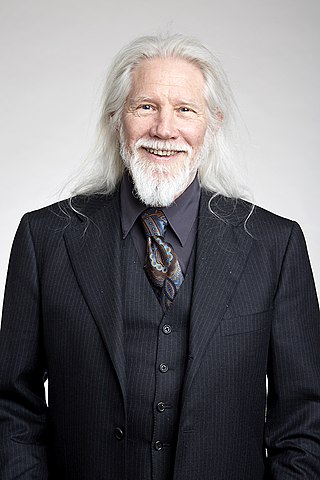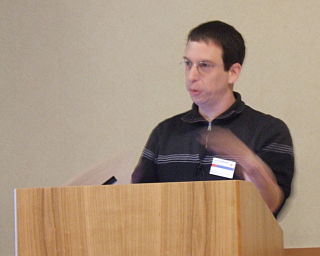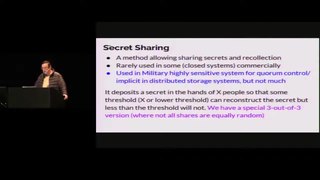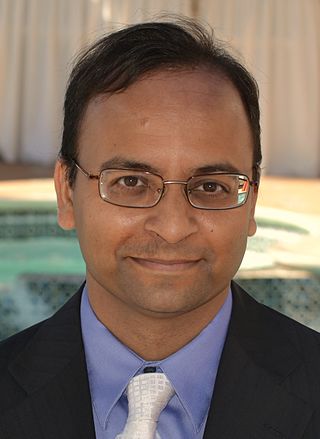Related Research Articles

Ralph C. Merkle is an American computer scientist and mathematician. He is one of the inventors of public-key cryptography, the inventor of cryptographic hashing, and more recently a researcher and speaker on cryonics.

Ronald Linn Rivest is a cryptographer and computer scientist whose work has spanned the fields of algorithms and combinatorics, cryptography, machine learning, and election integrity. He is an Institute Professor at the Massachusetts Institute of Technology (MIT), and a member of MIT's Department of Electrical Engineering and Computer Science and its Computer Science and Artificial Intelligence Laboratory.

David Lee Chaum is an American computer scientist, cryptographer, and inventor. He is known as a pioneer in cryptography and privacy-preserving technologies, and widely recognized as the inventor of digital cash. His 1982 dissertation "Computer Systems Established, Maintained, and Trusted by Mutually Suspicious Groups" is the first known proposal for a blockchain protocol. Complete with the code to implement the protocol, Chaum's dissertation proposed all but one element of the blockchain later detailed in the Bitcoin whitepaper. He has been referred to as "the father of online anonymity", and "the godfather of cryptocurrency".

Bailey Whitfield 'Whit' Diffie ForMemRS is an American cryptographer and mathematician and one of the pioneers of public-key cryptography along with Martin Hellman and Ralph Merkle. Diffie and Hellman's 1976 paper New Directions in Cryptography introduced a radically new method of distributing cryptographic keys, that helped solve key distribution—a fundamental problem in cryptography. Their technique became known as Diffie–Hellman key exchange. The article stimulated the almost immediate public development of a new class of encryption algorithms, the asymmetric key algorithms.
The computational Diffie–Hellman (CDH) assumption is a computational hardness assumption about the Diffie–Hellman problem. The CDH assumption involves the problem of computing the discrete logarithm in cyclic groups. The CDH problem illustrates the attack of an eavesdropper in the Diffie–Hellman key exchange protocol to obtain the exchanged secret key.
The external Diffie–Hellman (XDH) assumption is a computational hardness assumption used in elliptic curve cryptography. The XDH assumption holds if there exist certain subgroups of elliptic curves which have useful properties for cryptography. Specifically, XDH implies the existence of two distinct groups with the following properties:
- The discrete logarithm problem (DLP), the computational Diffie–Hellman problem (CDH), and the computational co-Diffie–Hellman problem are all intractable in and .
- There exists an efficiently computable bilinear map (pairing) .
- The decisional Diffie–Hellman problem (DDH) is intractable in .
Solvency, in finance or business, is the degree to which the current assets of an individual or entity exceed the current liabilities of that individual or entity. Solvency can also be described as the ability of a corporation to meet its long-term fixed expenses and to accomplish long-term expansion and growth. This is best measured using the net liquid balance (NLB) formula. In this formula, solvency is calculated by adding cash and cash equivalents to short-term investments, then subtracting notes payable. There exist cryptographic schemes for both proofs of liabilities and assets, especially in the blockchain space.
A group signature scheme is a method for allowing a member of a group to anonymously sign a message on behalf of the group. The concept was first introduced by David Chaum and Eugene van Heyst in 1991. For example, a group signature scheme could be used by an employee of a large company where it is sufficient for a verifier to know a message was signed by an employee, but not which particular employee signed it. Another application is for keycard access to restricted areas where it is inappropriate to track individual employee's movements, but necessary to secure areas to only employees in the group.

Dan Boneh is an Israeli–American professor in applied cryptography and computer security at Stanford University.
Pairing-based cryptography is the use of a pairing between elements of two cryptographic groups to a third group with a mapping to construct or analyze cryptographic systems.
The Decision Linear (DLIN) assumption is a computational hardness assumption used in elliptic curve cryptography. In particular, the DLIN assumption is useful in settings where the decisional Diffie–Hellman assumption does not hold. The Decision Linear assumption was introduced by Boneh, Boyen, and Shacham.
A BLS digital signature, also known as Boneh–Lynn–Shacham (BLS), is a cryptographic signature scheme which allows a user to verify that a signer is authentic.
Return-oriented programming (ROP) is a computer security exploit technique that allows an attacker to execute code in the presence of security defenses such as executable space protection and code signing.
Identity-based cryptography is a type of public-key cryptography in which a publicly known string representing an individual or organization is used as a public key. The public string could include an email address, domain name, or a physical IP address.

Elie Bursztein, is a French computer scientist and software engineer. He is Google and DeepMind AI cybersecurity technical and research lead.

Mordechai M. "Moti" Yung is a cryptographer and computer scientist known for his work on cryptovirology and kleptography.
Matthew Keith "Matt" Franklin is an American cryptographer, and a professor of computer science at the University of California, Davis.
Jonathan Katz is a professor in the Department of Computer Science at the University of Maryland who conducts research on cryptography and cybersecurity. In 2019–2020 he was a faculty member in the Volgenau School of Engineering at George Mason University, where he held the title of Eminent Scholar in Cybersecurity. In 2013–2019 he was director of the Maryland Cybersecurity Center at the University of Maryland.

Amit Sahai is an Indian-American computer scientist. He is a professor of computer science at UCLA and the director of the Center for Encrypted Functionalities.

Hertzbleed is a hardware security attack which describes exploiting dynamic frequency scaling to reveal secret data. The attack is a kind of timing attack, bearing similarity to previous power analysis vulnerabilities. Hertzbleed is more dangerous than power analysis, as it can be exploited by a remote attacker. Disclosure of cryptographic keys is the main concern regarding the exploit but other uses of the attack have been demonstrated since its initial discovery.
References
- ↑ "Top-to-Bottom Review :: California Secretary of State". www.sos.ca.gov. Retrieved 2024-03-07.
- ↑ "IEEE Symposium on Security and Privacy 2020". www.ieee-security.org. Retrieved 2024-03-07.
- ↑ Boneh, Dan; Lynn, Ben; Shacham, Hovav (2001). "Short Signatures from the Weil Pairing". In Boyd, Colin (ed.). Advances in Cryptology — ASIACRYPT 2001. Lecture Notes in Computer Science. Berlin, Heidelberg: Springer. pp. 514–532. doi:10.1007/3-540-45682-1_30. ISBN 978-3-540-45682-7.
- ↑ "Understanding Hardware-enforced Stack Protection". TECHCOMMUNITY.MICROSOFT.COM. Retrieved 2024-03-07.
- ↑ "A Technical Look at Intel's Control-flow Enforcement Technology". Intel. Retrieved 2024-03-07.
- ↑ Leyden, John. "Boffins warn on car computer security risk". www.theregister.com. Retrieved 2024-03-07.
- ↑ Diego, University of California-San. "Researchers find security flaws in backscatter X-ray scanners". phys.org. Retrieved 2024-03-07.
- ↑ Greenberg, Andy. "Researchers Easily Slipped Weapons Past TSA's X-Ray Body Scanners". Wired. ISSN 1059-1028 . Retrieved 2024-03-07.
- ↑ "Dr. Hovav Shacham Awarded ACM CCS Test-of-Time Award 2019 | Department of Computer Science". www.cs.utexas.edu. Retrieved 2024-03-07.
- ↑ "Computer Scientists Win Test of Time Award for Paper that Changed the Auto Industry".